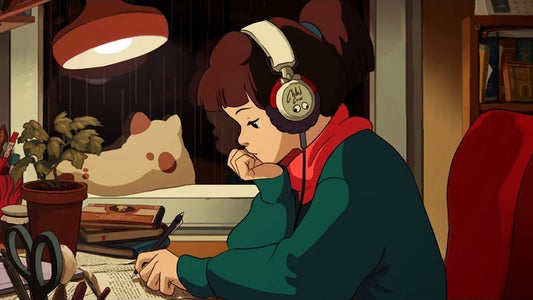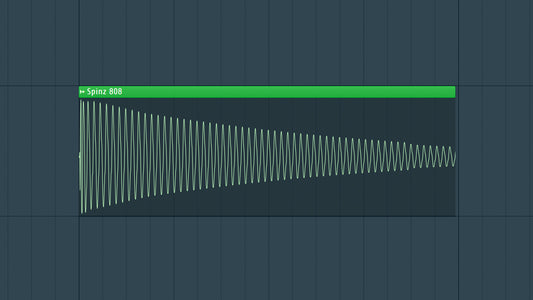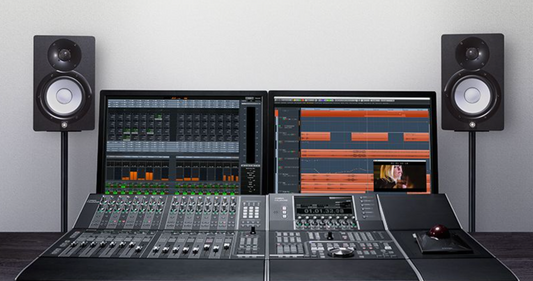Introduction
One of the best ways I have seen to make money as a music producer is sync licensing. A lot of my music friends have made a TON of money doing sync, and today I wanted to show you how to get in to it! The marriage of music and visual storytelling is a powerful force in the world of film and television. For music producers aspiring to venture into the realm of sync licensing, this blog explores valuable tips and insights to help you navigate the process of producing music that enhances cinematic and television experiences.
DOWNLOAD 20+ FREE SAMPLE PACKS - CLICK HERE

1. Understanding Sync Licensing:
Definition and Significance:
Sync licensing involves placing music in synchronization with visual media, such as film, TV shows, commercials, and video games. This collaboration is crucial for enhancing the emotional impact of scenes and creating a memorable audiovisual experience.
2. Tailoring Your Sound to the Story:
Genre Flexibility:
Be versatile in your musical approach. Different genres suit various scenes and moods, so cultivating a diverse skill set allows you to cater to a broad range of storytelling needs.
Emotional Resonance:
Create music that elicits emotions. Whether it's tension, joy, sadness, or excitement, syncing your composition with the visual narrative requires a keen understanding of the story's emotional arc.
3. Crafting Versatile Tracks:
Instrumentation:
Build tracks that can easily be adapted to different scenes. Instrumentals with clear melodies, evolving dynamics, and minimal vocals provide versatility for various sync opportunities.
Edits and Variations:
Offer different versions of your tracks. Create variations with varying lengths, intensity, or instrumentation to accommodate different scene durations and moods.
4. Studying Successful Sync Tracks:
Analyzing Soundtracks:
Study successful film and TV soundtracks. Analyze how the music enhances specific scenes and complements the overall storytelling. Identify patterns, instrumentation choices, and emotional triggers.
Industry Trends:
Stay updated on current industry trends in film and TV music. Understanding what's in demand allows you to tailor your compositions to meet the evolving needs of filmmakers and producers.
5. Networking and Collaboration:
Building Relationships:
Network with filmmakers, directors, and producers. Attend industry events, film festivals, and networking sessions to connect with professionals who may be seeking the perfect sound for their projects.
Collaborating with Filmmakers:
Collaborate directly with filmmakers on original projects. Building relationships with directors and producers can lead to exclusive sync licensing opportunities.
6. Licensing Platforms and Agencies:
Submitting to Libraries:
Submit your music to sync licensing libraries and agencies. Platforms like Musicbed, Epidemic Sound, and Artlist offer opportunities for producers to showcase their work to a broad audience of content creators.
Sync Licensing Agencies:
Consider working with sync licensing agencies that actively pitch music to filmmakers and production houses. These agencies often have established connections and can facilitate placements for your tracks.
7. Quality Production and Mixing:
High-Quality Recording:
Ensure your recordings are of the highest quality. Clean, well-produced tracks stand out and are more likely to be considered for sync opportunities.
Mixing for Dialogue:
Consider the importance of dialogue in film and TV. Ensure your music doesn't overpower spoken words and is mixed to complement the overall audio landscape.
8. Licensing Rights and Legalities:
Clear Ownership:
Make sure you own the rights to your music. Clear ownership is essential for sync licensing, as filmmakers and producers need assurance that the music can be legally used in their projects.
Licensing Agreements:
Understand the terms of licensing agreements. Some sync licenses may be exclusive, while others allow for non-exclusive use. Familiarize yourself with the specifics of each agreement.
DOWNLOAD 20+ FREE SAMPLE PACKS - CLICK HERE
Conclusion
Producing music for film and TV through sync licensing is an exciting avenue for music producers to merge their creativity with visual storytelling. By honing your skills, crafting versatile tracks, building industry connections, and understanding the legalities of sync licensing, you can position yourself for success in this dynamic and rewarding field. So, compose with a cinematic vision, immerse yourself in the storytelling process, and let your music become the sonic tapestry of unforgettable on-screen moments. Happy syncing!




